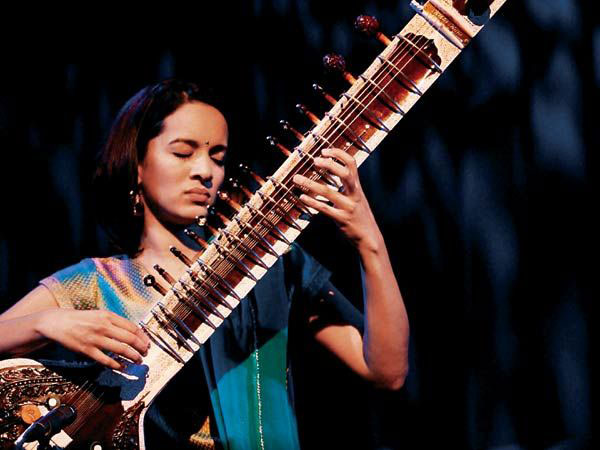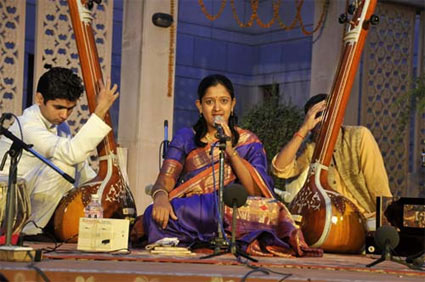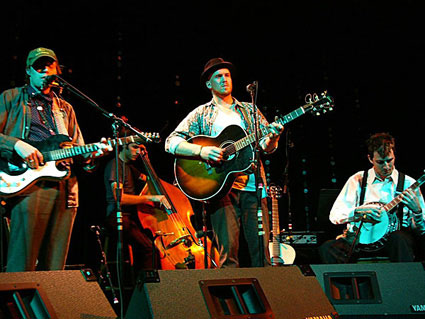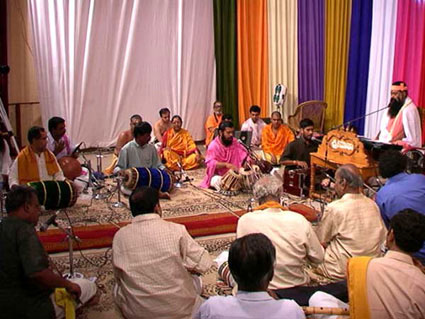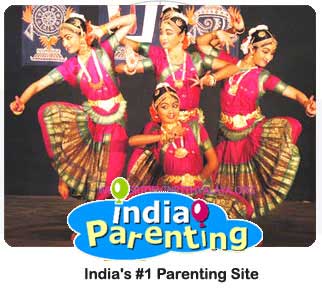by Smt. Shampa Pakrashi Music is food for the soul. Indian classical music does just that to you. Every pull of the string and every swara will strike a chord in your heart. When we speak of Indian music, we are primarily referring to "pure music" or "ragdaari music". Commonly known as Indian classical music, the term classical is a misnomer as Indian raagdaari music dates back to 2000 B.C. - 1000 B.C. proving that it existed far before the renaissance or classic era. Indian music based on the raag form encompasses both, a) North Indian raga music - which is prevalent in almost all but the southern Indian states and b) The music of southern origin - which is still restricted to and appreciated mainly by southern India. They are known as Hindustani shastriya sangeet (northern) and Karnatic sangeet (southern) respectively. In this articleSamvedaPitchTimbreIntensity Samveda Samveda, the ancient Indian scripture describes Indian pure music as nad yoga (Nad- Sound). It is believed to be divine and sacred in nature, involving not only the performer but also elevating the listeners to a spiritual height. Nad or sound is of two varieties - the voice of ones conscious self or anahat nad and that produced via friction or by striking an object i.e. aahat nad. Aahat nad is useful for musical purposes if it manages to bring about a melodious sound. The very basis of music is consonance (surilapan). Not all sounds are pleasing to the ears. Musical sound has four characteristics - pitch, quality, timbre and intensity. Heres how they are defined. Pitch Pitch is determined by the number of vibrations per second generated through the voice or instrument. Timbre Each voice or sound has its distinctive tone or colour which is based on the overtones present. This brings us to another question, what are overtones? While listening to the notes we hear not one but several pitches along with the basic fundamental note. These are overtones. It gives a specific nature to a note which in turn helps to make a raga distinctive. Intensity Intensity can be described as volume or strength of the sound. Two notes can be judged by their mutual relation. Identifying one note from another is a matter of degree of frequencies of sound. Raagdari music, as we know it, pleasantly creates an emotional networking of sounds which are melodious in nature. It is also a medium of expression of ones thoughts and feelings through tones and time which are the basic elements forming the framework of a composition. It is the result of regular measured vibrations, which appeal to the intellect and are soothing to the ear. Noise or cacophony produced by irregular vibrations has no place in music. Pure Indian music is monophonic unlike the popular music or film music. Harmony, a western concept, is almost nil in pure Indian music except for the tanpura ( a four stringed instrument used for accompaniment) which can be said to add a harmonic element to the performance. Raga music is an art form that has a specific structure. There are rules governing the formation of a raaga and there has to be an organised rhythmic part. Pure Indian music consists of melody and rhythm. Swara i.e. note or tone is the basis of melody. The nature of a raga can be depicted by the number of swaras that are present or missing, certain melodic characteristics imparted by their ascent and descent and the swaras that are emphasised upon. However, a raga is more than a mere assemblance of these features. Without an organised analysis it is difficult to understand the spirit of individual ragas. It is like a painting which can be illustrated as a purely technical and structured concept but at the same time possesses a deeper and philosophical meaning embedded within.
Music is food for the soul. Indian classical music does just that to you. Every pull of the string and every swara will strike a chord in your heart. When we speak of Indian music, we are primarily referring to "pure music" or "
ragdaari music". Commonly known as Indian classical
music, the term 'classical' is a misnomer as Indian
raagdaari music dates back to 2000 B.C. - 1000 B.C. proving that it existed far before the renaissance or classic era.
Indian music based on the
raag form encompasses both,
a) North Indian
raga music - which is prevalent in almost all but the southern Indian states and
b) The music of southern origin - which is still restricted to and appreciated mainly by southern India. They are known as Hindustani
shastriya sangeet (northern) and
Karnatic sangeet (southern) respectively.
Samveda
Samveda, the ancient Indian scripture describes Indian pure music as '
nad yoga' (Nad- Sound). It is believed to be divine and sacred in nature, involving not only the performer but also elevating the listeners to a spiritual height.
Nad or sound is of two varieties - the voice of one's conscious self or '
anahat nad' and that produced via friction or by striking an object i.e. '
aahat nad'.
Aahat nad is useful for musical purposes if it manages to bring about a melodious sound.
The very basis of music is consonance (
surilapan). Not all sounds are pleasing to the ears. Musical sound has four characteristics - pitch, quality, timbre and intensity. Here's how they are defined.
Pitch
Pitch is determined by the number of vibrations per second generated through the voice or instrument.
Timbre
Each voice or sound has its distinctive tone or colour which is based on the overtones present.
This brings us to another question, what are overtones? While listening to the notes we hear not one but several pitches along with the basic fundamental note. These are overtones. It gives a specific nature to a note which in turn helps to make a
raga distinctive.
Intensity
Intensity can be described as 'volume' or strength of the sound.
Two notes can be judged by their mutual relation. Identifying one note from another is a matter of degree of frequencies of sound.
Raagdari music, as we know it, pleasantly creates an emotional networking of sounds which are melodious in nature. It is also a medium of expression of one's thoughts and feelings through tones and time which are the basic elements forming the framework of a composition. It is the result of regular measured vibrations, which appeal to the intellect and are soothing to the ear. Noise or cacophony produced by irregular vibrations has no place in music.
Pure Indian music is monophonic unlike the popular music or film
music. Harmony, a western concept, is almost nil in pure Indian music except for the
tanpura ( a four stringed instrument used for accompaniment) which can be said to add a harmonic element to the performance.
Raga music is an art form that has a specific structure. There are rules governing the formation of a
raaga and there has to be an organised rhythmic part. Pure Indian music consists of melody and rhythm.
Swara i.e. note or tone is the basis of melody. The nature of a
raga can be depicted by the number of
swaras that are present or missing, certain melodic characteristics imparted by their ascent and descent and the
swaras that are emphasised upon. However, a raga is more than a mere assemblance of these features.
Without an organised analysis it is difficult to understand the spirit of individual 'ragas'. It is like a painting which can be illustrated as a purely technical and structured concept but at the same time possesses a deeper and philosophical meaning embedded within.












